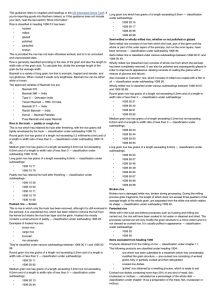The UK has depended on imported foods and ingredients for centuries. The market mechanisms which make this possible are under attack – from the British government.
At the end of April, it started charging a levy on certain food imports. Called the Common User Charge (CUC), it is currently applied to a number of plant and animal products which are subject to Sanitary and Phytosanitary (SPS) checks. The supposed aim of the levy is to pay for wear and tear to the UK’s port facilities arising from HGV traffic. It is not being collected to pay off capital expenditure. Whether intentionally or not, the Common User Charge could destroy key sectors of the British economy.
Projections of its likely cost to importers have risen steadily as civil servants have got a better understanding of how consignments are documented. The Common User Charge was first calculated as a one-off levy, taking the top five consignment lines from a single Common Health Entry Document (CHED). There can be more than one CHED for a consignment: they list commodity codes and the risk status of the goods in the consignment. Low risk products and goods in transit (to Ireland) are charged at £10 per consignment line, which rises to £29 for medium and high risk products.
When it became clear that a consignment can have more than one CHED those drafting the rules worked out that they were missing a trick. From an initial assurance that a common user charge would be capped at £145 and based on a single CHED, they became complex calculations across multiple CHEDs, totalling several hundreds to a thousand or two thousand pounds.
Importers of food to the UK using Dover could end up paying twice. Until recently, food safety testing was routinely carried out on products arriving in Dover. Now, drivers with consignments of animal or plant products that require SPS testing will be instructed to take their lorries to an Inland Border Facility at Sevington, 22 miles away, where a further Common User Charge will be due. The site also serves the nearby Eurotunnel terminal at Ashford.
Compare this to a basic ferry ticket for a lorry, like the DFDS cross-channel Spot ticket, which sells online for less than £300, of which six pounds go to the ports at either end of the trip, covering wear and tear on the roadways as well as port maintenance. The Common User Charge is 48 times more than the modest sum charged by a commercial shipping line. Dover port is owned by the town, thanks to a royal warrant issued by James I in 1604, meaning that the state has no stake in the country’s largest port. Not that this has stopped it from milking Dover like a cash cow. For a number of reasons, Sevington has been pushed for SPS testing by the Department for Transport, which has been responsible for the site since it opened.
When the question of double charging was raised, the response was unequivocal. “You will be charged the CUC regardless of whether the lorry is called for inspection or not, along with the Ashford Port Health Authority relevant charges,” (sic) a spokesperson for Dover port declared. The idea that treating the world with contempt might be inappropriate seemed to be irrelevant. Not sure that the two halves of the answer were in response to the same question, either.
Urban Food Chains understands that importers are unable to access any billing or account information relating to the first Common User Charge bills. On April 16 and 25, HMRC updated its guidance, explaining that the first CUC invoices would not be sent until 12 weeks after April 30, the date the CUC came into effect. After July 30, invoices will be monthly in arrears. There are no plans to include any consignment detail that would help businesses to identify the shipments.
The new system risks creating a hostile environment (see this post) for hauliers and importers alike. This would reduce both the availability of goods and drivers to move them, as well as pushing up prices.





